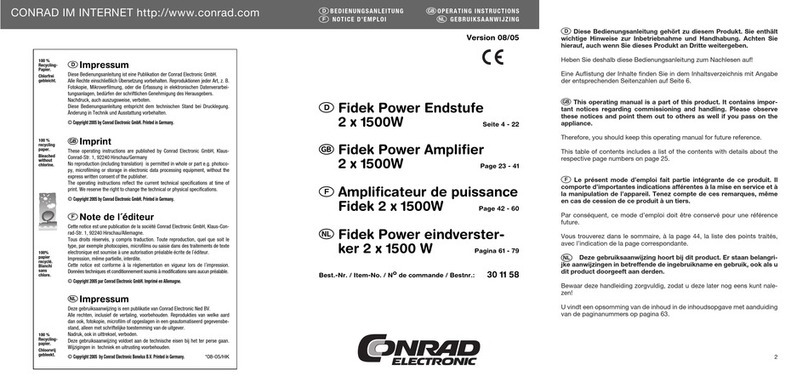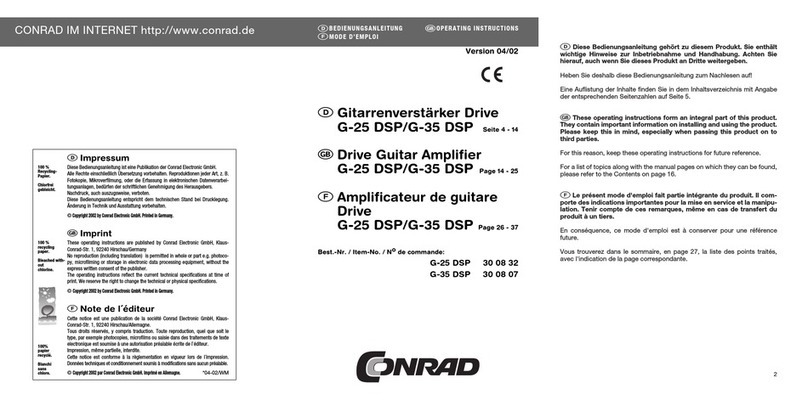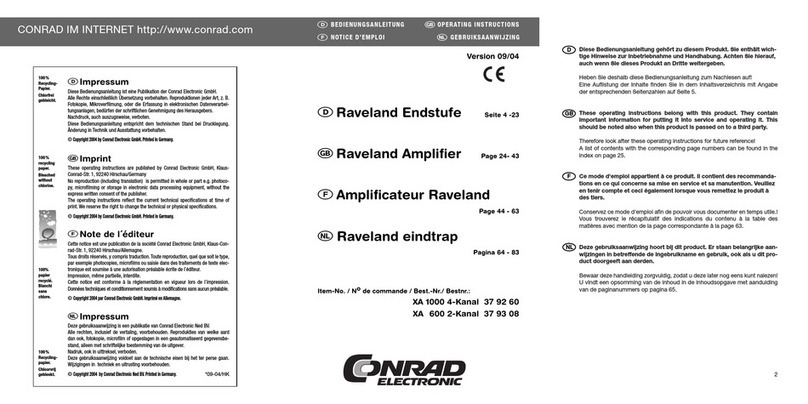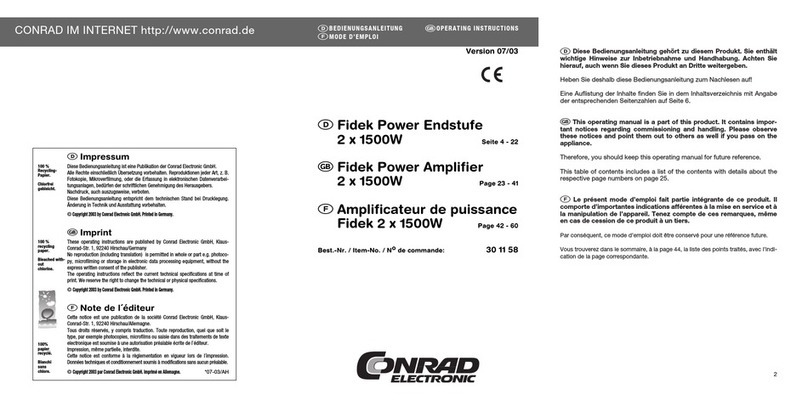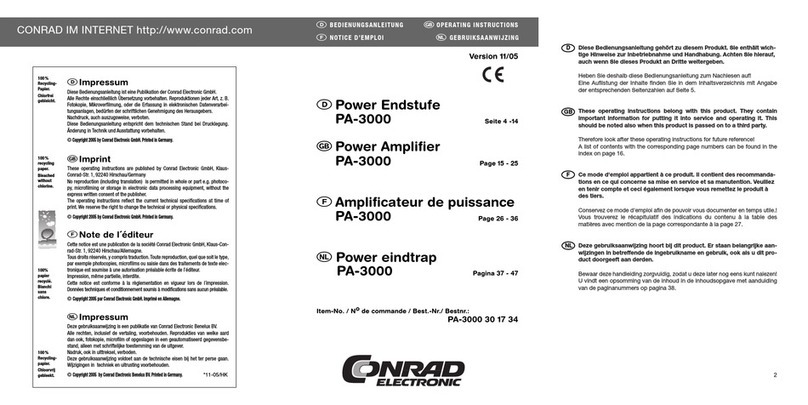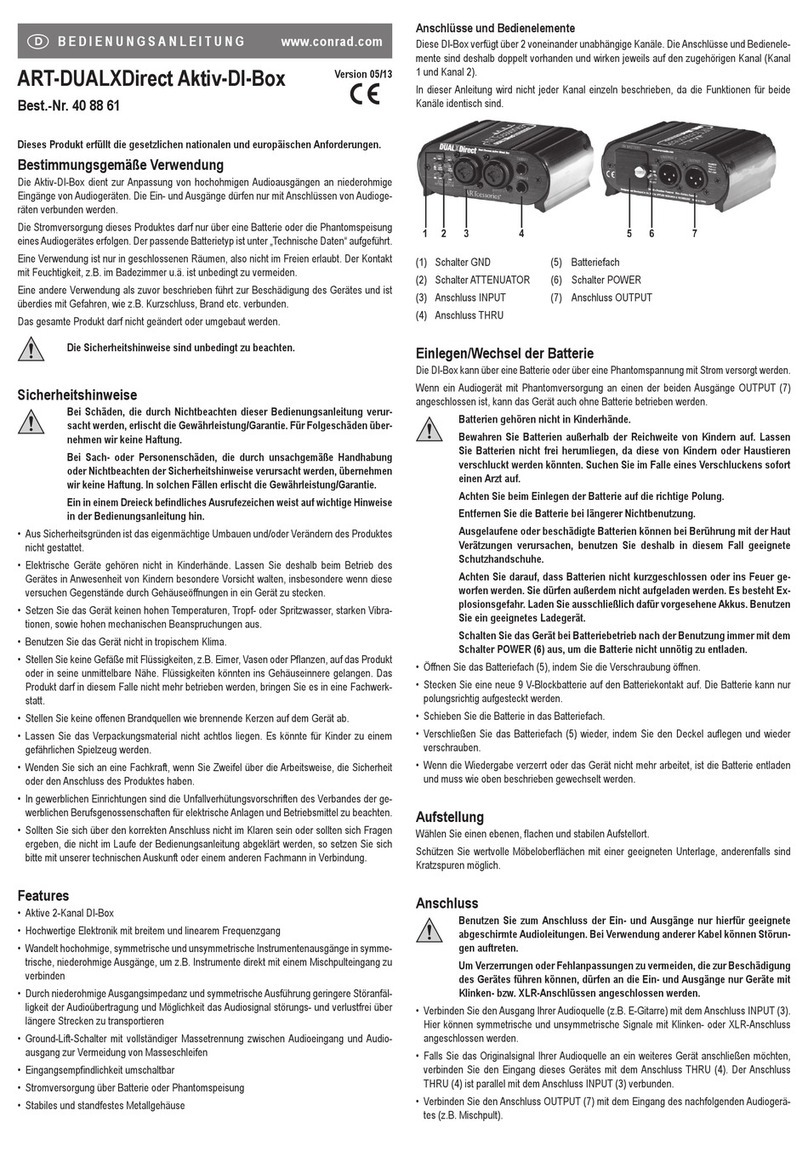
6TEACHING MODE
●Be sure that detection may become unstable depending on the use environ-
ment in teaching if less margin is applied.
●When teaching in Window comparator mode or Hysteresis mode, a setting
has to be made in PRO mode beforehand.
In case 1-point teaching, make sure to set the shift amount. (initial value is
10% or 100)
For the setting, refer to “PRO MODE OPERATION MANUAL.”
●Teaching can be set in RUN mode.
Useful when sensing object can be set
●This is basic teaching method.
2-point teaching
Useful when sensing object cannot be set
●This is teaching method in case small object or object in back ground are existing
Limit-teaching
Note: The shift value of approx. 15% is an initial value. Display of the shift value can be change in percentage
[approx. 0 to 999% (unit 1 %)] or incident light intensity [0 to 9999 (unit 1)].
For setting the shift amount, refer to “PRO MODE OPERATION MANUAL.”
Useful when not want to stop production line and to keep the sensing object move
Full-auto teaching
Stable sensing is possible
1. Pressing SET key down
2.
Run the sensing object on the line and hold down the SET key.
Stable sensing is not possible
3. “ ” is displayed on the digital display (green) and when the
sensing object passed through, release the SET key.
Automatic
Pressing down long
<Thru-beam type and refractive type are common>
Stable sensing is possible
1. Press the SET key in the sensing object present condition.
2. Press the SET key in the sensing object absent condition.
Stable sensing is not possible
<Reective type>
1 2
<Thru-beam type>
1
2
Stable sensing is possible
1. Press the SET key in the sensing
object present condition or non
sensing object present condition.
2. The threshold level is shifted to
high value (low sensitivity) by
pressing down UP key.
The threshold level is shifted to low
value (high sensitivity) by pressing
down UP key.
Stable sensing is not possible
<Thru-beam type and refractive type are common>
or
11
PRO MODE
●When MODE indicator: PRO (yellow) lights up, PRO mode can be set.
●For detail of PRO mode, refer to “ PRO MODE OPERATION MANUAL.”
Procedure
SET
SET
+,
-
+,
-
+,
-
+,
-
+,
-
+,
-
+,
-
+,
-
+,
-
+,
-
+,
-
+,
-
+,
-
+,
-
+,
-
+,
-
+,
-
+,
-
+,
-
+,
-
+,
-
+,
-
+,
-
+,
-
+,
-
+,
-
SET
Shift amount setting
Timer setting
Responce time setting
Hysteresis setting
Emission power setting
Timer range setting
Teaching lock setting
Setting items in digital display setting
Setting of digital display turning
Time period hold setting
Data bank loading setting
Back up setting
Communication protocol setting
Display adjustment setting
Setting of threshold value tracking
Copy lock setting
Copy action setting
Data bank saving setting
<PRO3>
<PRO5>
Code setting
<PRO6>
Reset setting
CUSTOM setting
Interference prevention setting
Sensing output setting
<PRO4>
Copy setting
<PRO2>
ECO setting
SET
SET
SET
+,
-
External input setting
SET
<PRO7>
Logic operation setting
+,
-
+,
-
+,
-
+,
-
+,
-
DOWN (
-
) key (select)
MODE indicator PRO (Yellow)
MODE key
UP (+) key (select)
SET key (conrm)
4I/O CIRCUIT DIAGRAMS
<FX-505-C2>
<FX-505P-C2>
Note: Make sure to insulate the ends of the unused lead wires.
5OPERATION PROCEDURE
●The sensing output can be switched to sensing output 1 or sensing output 2
by holding down the mode key.
●The changed settings are not stored if turning the power OFF while setting.
Therefore, conrm the settings by pressing the SET key before turning the
power OFF.
●When turning ON the power, RUN mode is displayed and the digital display
shows the threshold value (green) and the incident light intensity (red).
Load
+
-
12 to 24V DC
%
Load
Load (0 to 250Ω)
Main circuit
(Brown) +V
(Pink) External input
(Black) Sensing output 1
(White) Sensing output 2
(Blue) 0V
(Gray) Monitor current output (4 to 20mA)
Load
+
-
12 to 24V DC
%
Load
Load (0 to 250Ω)
(Brown) +V
(Pink) External input
(Black) Sensing output 1
(White) Sensing output 2
Main circuit
(Blue) 0V
(Gray) Monitor current output (4 to 20mA)
• Displays threshold value (green) and incident light intensity (red).
• Teaching, threshold value ne adjustment and key lock function
can be set.
• For setting method of each function, refer to “ TEACHING
MODE,” “ THRESHOLD VALUE FINE ADJUSTMENT FUNC-
TION,” or “ KEY LOCK FUNCTION.”
<RUN mode>
• Select either Light-ON or Dark-ON.
• For the setting, refer to
“SENSING OUTPUT OPERATION
MODE
.”
• The default setting is “ ” (Light-ON).
<Sensing output operation mode>
• An item set in CUSTOM mode (Response time setting, Emission
power setting and Hysteresis setting) is displayed.
• For details, refer to “ CUSTOM MODE.”
• The default setting is “ ” (response time setting).
<CUSTOM mode>
• Advanced setting can be done.
• For the setting, refer to “ PRO MODE.”
<PRO mode>
<RUN mode>
1-point teaching
[Window comparator mode (except sensing output 2) / Hysteresis mode]
●This is method to set the shift amount to the desired value and to set the
threshold range by using the 1-point teaching.
Notes 1)
The shift amount of 10% is an initial value. The shift amount can be set in PRO mode. Furthermore, the shift
value can be set in incident light amount. For setting method, refer to “PRO MODE OPERATION MANUAL.”
2) If the value after setting exceeds the maximum (minimum), the maximum (minimum) sensitivity will be set.
2-point teaching
[Window comparator mode (except sensing output 2) / Hysteresis mode]
●This is method to set the threshold range by conducting the 2-point teaching (P-1, P-2).
●When conducting teaching, use sensing objects (P-1 and P-2) whose incident
light intensities are different from each other.
Note: If the value after setting exceeds the maximum (minimum), the maximum (minimum) sensitivity will be set.
3-point teaching
[Window comparator mode (except sensing output 2) / Hysteresis mode]
●This is the method to conduct the 3-point teaching (P-1, P-2, P-3) and to set the
threshold range by setting the threshold value (1_SL) of the mid-point between “A”
and “B” and the threshold value (2_SL) of the mid-point between “B” and “C”.
●When conducting teaching, use sensing objects (A, B and C) whose incident
light intensities are different.
●After teaching, P-1, P-2 and P-3 will be automatically relocated in ascending order:
i.e. the lowest value is placed in “A”, the second lowest in “B” and the highest in “C”.
Note: If the value after setting exceeds the maximum (minimum), the maximum (minimum) sensitivity will be set.
Span adjustment in rising differential mode or trailing differential mode
● Press the SET key to conrm the setting item.
●The threshold can be set by using the threshold value ne adjustment function.
For the threshold value ne adjustment function, refer to “ THRESHOLD
VALUE FINE ADJUSTMENT FUNCTION”
Stable sensing is possible
1. Pressing SET key down (1st time)
2. Press down the SET key in the sensing object present condition.
(2nd time)
Stable sensing is not possible
<Hysteresis mode>
1_SL (P-1) 2_SL (P-2)
<Window comparator mode>
1_SL (P-1) 2_SL (P-2)
<Hysteresis mode>
A 2_SL1_SL B C
<Window comparator mode>
A 2_SL1_SL B C
Stable sensing is possible
1. Press SET key down in the sensing object present condition (1st time)
2.
Press SET key down in the sensing object present condition (2nd time)
Stable sensing is not possible
3.
Press SET key down in the sensing object present condition (3rd time)
Short span
Long span
Changed intensity
<Hysteresis mode>
1_SL P-1 2_SL
<Window comparator mode>
1_SL P-1 2_SL
Stable sensing is possible
1. Pressing SET key down
2. Press the SET key down in the sensing object present condition.
Stable sensing is not possible
3. The threshold value (1_SL) that is 10% lower from the incident
light intensity and the threshold value (2_SL) that is 10% higher
from the incident light intensity are set. (Note 1, 2)
Set to de-
sired value
Set to de-
sired value
Set to de-
sired value
Set to de-
sired value
7THRESHOLD VALUE FINE ADJUSTMENT FUNCTION
● Set ne adjustment of threshold value in RUN mode.
●Also, the threshold value ne adjustment function can be used in forced ON
output mode and forced OFF output mode
●For setting of the sensing output, refer to “PRO MODE OPERATION MANUAL.”
<Normal mode, Rising differential mode or Trailing differential mode>
<Window comparator mode or Hysteresis mode>
●When setting sensing output to the window comparator mode or hysteresis
mode, “ ” and “ ” can be changed to another by pressing down
SET key for 2 sec.
In case conducting threshold value ne adjustment of “ ” or “ ”, press
down UP key or Down key, and “ ” or “ ” are displayed. Then, the
threshold value ne adjustment can be conducted.
Note: It may not respond when values of “ ” and “ ” are close because of relation of hysteresis. Be sure
to conrm with this device.
8KEY LOCK FUNCTION
●The key lock function prevents key operations so that the conditions set in
each setting mode are not inadvertently changed.
●If operating key switch after key lock is set, “ ” is indicated on the
digital display.
<Set key lock>
<Release key lock>
9SENSING OUTPUT OPERATION MODE
●When MODE indicator: L / D (yellow) lights up, sensing output operation can be set.
10
CUSTOM MODE
●When MODE indicator: CUST (yellow) lights up,
Response time setting, Emission power setting
or Hysteresis setting can be displayed.
For the setting procedure, refer to “PRO MODE
OPERATION MANUAL.”
●By pressing UP key or DOWN key, the setting in
each item will be changed.
● Press SET key to conrm the setting.
●For setting of each item, refer to the following
table.
Item Digital display Reference item
Response time
setting <PRO 1: Response time setting>
Emission power
setting <PRO 1: Emission power setting>
Hysteresis
setting <PRO 1: Hysteresis setting>
Conrmed
Press down
UP / DOWN key
Press down
SET key
Automatically set without pressing
down SET key in approx. 2 sec.
,
are displayed
Automatic
MODE indicator
CUST (Yellow)
UP key
SET key DOWN key
MODE key
Press down
UP / DOWN key
Press down
SET key
Press down
UP / DOWN key
Conrmed
Automatically set without
pressing down SET key.
Press down for
3 sec. or more
Press down for
3 sec. or more
Automatic
Press down
SET key
Press down
UP / DOWN key
Conrmed
Conrmed
12
OPTICAL COMMUNICATION
●When the setting of data bank loading / saving, copy setting, or copy action
setting is conducted via optical communications, cascade the sub ampliers
right side to the main amplier as follows.
However, in case using data bank loading / saving, use FX-502□ or FX-505□-C2
as main amplier.
● If an amplier is under any of the following conditions, the setting of data bank
loading / saving, or copy setting cannot be carried out.
• Copy lock setting is set to copy lock ON “ .”
• Digital display is blinking
• External input setting of main amplier is set to “ .” (Only data-
bank loading / saving)
●When communication protocol of a
sub amplier is set to communication
emission halt “ ” the set-
ting of data bank loading / saving, or
copy setting cannot be carried out to
sub ampliers subsequent to the men-
tioned amplier.
●Make sure to mount closely like fol-
lows since interference prevention
function is conducted by optical com-
munication.
●When this product and other products (e.g. ber sensor ampliers, pressure
sensor controllers, etc.) are connected together in cascade, install those prod-
ucts so that they are in order of Group A, B, D and C as shown in the right g-
ure. This product is included in Group D.
Group Model No.
AFX-301□ (Conventional version unit)
FX-301B□/G□/H□, LS-401□
BFX-301□ (Modied version unit)
FX-305□, FX-301□-C1
CLS-403□, DPS series
DFX-500 series
● As for the products that are located between different groups, afx the ampli-
er protection seal FX-MB1 (optional) on the communication window of each
corresponding product.
●Within each group, identical models should be connected in a lump.
●In case conducting copy setting of this device and other FX-500 series togeth-
er, functions which are incorporated in this device will be copied but functions
which are not incorporated in this device will not be copied.
13
INTERFERENCE PREVENTION FUNCTION
●This device incorporates an interference prevention function by setting differ-
ent emitting frequencies different from an interference prevention function by
optical communication.
●For Interference prevention function setting procedure, refer to “PRO MODE
OPERATION MANUAL.”
●Possible number of ampliers for interference prevention function is different
as shown in table below.
Response time
Interference
prevention function setting
H-SP FAST STD LONG U-LG HYPR
0248812
●In case putting in more ampliers than limit of interference prevention func-
tion, put the amplier protection seal to amplier which is adjacent of end of
an amplier that the interference function is valid or set OFF in communication
protocol setting of the end of amplier that the interference prevention function
is valid.
Example: Putting in 12 of this device and set STD of response time setting.
• Possible number of interference prevention is 4.
Put the amplier protection seals 4th and 5th ampliers and between 8th
and 9th ampliers or change the communication protocol setting of 4th and
8th to OFF since interference prevention works from 1st to 4th, from 5th to
8th and 9th to 12th.
●In case mounting more ampliers whose response time setting are different,
put protection seal between ampliers that have different response time setting
or set communication protocol setting of the upper amplier to OFF.
●For communication protocol setting procedure, refer to “PRO MODE OPERA-
TION MANUAL.”
Group
A
Group
B
Group
D
Group
C
Communication direction
Communication direction
Interference
prevention
possible
range
Put a protection seal between
4th and 5th amplier.
Or set communication protocol
setting in 4th to OFF.
Put a protection seal between
8th and 9th amplier.
Or set communication protocol
setting in 8th to OFF.
Interference prevention
possible range
Interference prevention
possible range
Main amplier Sub ampliers
Communication direction
INSTRUCTION MANUAL
Digital Fiber Sensor Amplier FX-505□-C2
MJE-FX505C2 No.0015-29V
Thank you very much for purchasing Panasonic products.
Please read this Instruction Manual carefully and thoroughly for the correct and
optimum use of this product.
Kindly keep this manual in a convenient place for quick reference.
WARNING
●Never use this product as a sensing device for personnel protection.
●In case of using sensing devices for personnel protection, use products which
meet laws and standards, such as OSHA, ANSI or IEC etc., for personnel
protection applicable in each region or country.
1INTENDED PRODUCTS FOR CE MARKING
●This product complies with the following standards / regulations.
<EU Directive>
EMC Directive 2004/108/EC
<Standards in US / Canada>
ANSI/UL 60947-5-2, CAN/CSA C22.2 No.14
<Regulations in Korea>
S1-G-1-2009, S2-W-5-2009
●Caution about UL recognition
In case requiring conformity of UL listing mark or C-UL listing mark, USe class
2 power supply unit.
2PART DESCRIPTION
Pressing down SET key + MODE key for 3 sec : Set key lock or Release key lock
3MOUNTING
How to connect
1. Fit the rear part of the mounting sec-
tion of the amplier on a DIN rail.
2. Press down the rear part of the
mounting section of the unit on the
DIN rail and fit the front part of the
mounting section to the DIN rail.
How to remove
1.
Push the controller forward.
2. Lift up the front part of the amplier
to remove it.
How to connect the ber cable
Be sure to t the attachment to the bers rst before inserting the bers to the
amplier. For details, refer to the Instruction Manual enclosed with the bers.
1. Snap the fiber lock lever down till it
stops completely.
2. Insert the ber cables slowly into the
inlets until they stops. (Note)
3. Return the fiber lock lever to the
original position till it stops.
Note: With the coaxial reective type ber, such as , FD-G4 or FD-FM2, insert the single core ber cable into the
beam-emitting inlet “P” and the multi-core ber cable into the beam-receiving inlet.
If they are inserted in reverse, the sensing performance will deteriorate.
<Reference>
Fiber lock lever
Fiber for
receiver
1. Snap
3. Return
2. Insert
Fiber for emitter
2. Lift up
1. Push forward
2. Press down
1. Fit
35mm width DIN rail
Digital display
(Green / Red)
UP key
• Teaching
• Threshold value
ne adjustment
• Select setting items
MODE key
• Select Modes
• Cancel during setting
• Select sensing output 1/2
by pressing long
SET key
• Teaching
• Confirm setting
contents
DOWN key
• Teaching
• Threshold value ne
adjustment
• Select setting items
Sensing output 2
selection indicator
(Yellow)
Sensing output 1
selection indicator
(Yellow)
Sensing output 1
operation indicator
(Orange)
Sensing output 2
operation indicator
(Orange)
MODE indicator: CUST (Yellow)
MODE indicator: PRO (Yellow)
MODE indicator: L / D (Yellow)
14
ERROR INDICATION
●In case of errors, attempt the following measures.
Error
indication Description Remedy
EEPROM is broken or reached the end of its
working life. Please contact our ofce.
EEPROM writing error
Load of the sensing output 1 is short-circuited
causing an over-current to ow. Turn OFF the power and check the load.
Load of the sensing output 2 is short-circuited
causing an over-current to ow.
Communication error when the ampliers are
mounted in cascade.
Verify that there is no loose or clearance between
ampliers.
Communication error between the upper com-
munication unit and ampliers.
Verify that there is no loose or clearance between
the upper communication unit and ampliers.
15
SPECIFICATIONS
Type Cable type
NPN output PNP output
Model No. FX-505-C2 FX-505P-C2
Supply voltage 12 to 24V DC % Ripple P-P10% or less
Power consumption
(Note 1)
Normal operation: 960mW or less (current consumption 40mA or less at 24V supply voltage)
Eco mode: 680mW or less (current consumption 28mA or less at 24V supply voltage)
Sensing output
(Sensing output 1 / 2)
NPN open-collector transistor
• Maximum sink current: 50mA
• Applied voltage: 30V DC or less
(Between sensing output and 0V)
• Residual voltage: 2V or less
(At 50mA sink current)
PNP open-collector transistor
• Maximum source current: 50mA
• Applied voltage: 30V DC or less
(Between sensing output and +V
)
• Residual voltage: 2V or less
(At 50mA
source
current)
Output operation Switchable either Light-ON or Dark-ON
Short-circuit protection Incorporated
Response time H-SP: 25μs or less, FAST: 60μs or less, STD: 250μs or less, LONG: 2ms or less,
U-LG: 4ms or less, HYPR: 24ms or less, Selectable
Monitor current output
• Output current: approx. 4 to 20mA
[Display in H-SP, FAST, STD: 0 to 4,000, Display in LONG: 0 to 8,000 (Note 2)
]
• Response time: 2ms or less
• Zero-point: Within 4mA ±1%F.S.
• Span: Within 16mA ±5%F.S.
• Linearity: Within ±3%F.S.
• load resistance: 0 to 250Ω
External input
• Signal condition
High: +8V to +V DC or Open
Low: 0 to +1.2V DC (at 0.5mA source current)
• Input impedance: Approx. 10kΩ
• Signal condition
High: +4V to +V DC (at 3mA sink current)
Low: 0 to +0.6V DC or Open
• Input impedance: Approx. 10kΩ
Protection IP40 (IEC)
Ambient temperature
-10 to +55°C (If 4 to 7 units are mounted adjacently in cascade: -10 to +50°C or if 8 to 12 units
are mounted adjacently in cascade: -10 to +45°C) (No dew condensation or icing allowed)
Storage: -20 to +70°C
Ambient humidity 35 to 85% RH, Storage: 35 to 85% RH
Material Enclosure: Polycarbonate, Protective cover: Polycarbonate
Switch: TPEE,
Cable 0.2mm26-core cabtyre cable, 2m long
Weight (Main body only)
Approx. 60g
Accessory FX-MB1 (Amplier protection seal): 1 set.
Note: 1)Excluding power consumption of the monitor current output
2)If the display adjustment was conducted, it is not in this range.
16
CAUTIONS
●This product has been developed / produced for industrial use only.
● Make sure that the power supply is OFF while adding or removing the ampliers.
●Take care that if a voltage exceeding the rated range is applied, or if an AC
power supply is directly connected, the product may get burnt or be damaged.
●Take care that short-circuit of the load or wrong wiring may burn or damage the product.
●Do not run the wires together with high-voltage lines or power lines, or put
them in the same raceway. This can cause malfunction due to induction.
● The specication may not be satised in a strong magnetic eld.
●Verify that the supply voltage variation is within the rating.
●If power is supplied from a commercial switching regulator, ensure that the frame
ground (F.G.) terminal of the power supply is connected to an actual ground.
●In case noise generating equipment (switching regulator, inverter motor, etc.)
is used in the vicinity of this product, connect the frame ground (F.G.) terminal
of the equipment to an actual ground.
●The ultra long distance (U-LG, HYPR) mode is more likely to be affected by
extraneous noise since the sensitivity of that is higher than the other modes.
Make sure to check the environment before use.
●Do not use during the initial transient time (H-SP, FAST, STD: 0.5 sec., LONG,
U-LG, HYPR: 1 sec.) after the power supply is switched ON.
●Use same power supply when mounting adjacently.
●Extension up to total 100m is possible. When you extend the cable, be sure the power sup-
ply voltage is 12V DC or more and use cables which have 0.3mm2or more of conductor
cross-section area. However, in order to reduce noise, make the wiring as short as possible.
●Make sure that stress by forcible bend or pulling is not applied to the sensor
cable joint and ber cable.
●This product is suitable for indoor use only.
●Avoid dust, dirt, and steam.
●Take care that the product does not come in contact with oil, grease, organic
solvents such as thinner, etc., strong acid or alkaline.
● This product cannot be used in an environment containing inammable or ex-
plosive gasses.
●Never disassemble or modify the product.
●This product adopts EEPROM. Settings cannot be done 100 thousand times
or more because of the EEPROM’s lifetime.
Overseas Sales Division (Head Ofce)
2431-1 Ushiyama-cho, Kasugai-shi, Aichi, 486-0901, Japan
Phone: +81-568-33-7861 FAX: +81-568-33-8591
Europe Headquarter: Panasonic Electric Works Europe AG
Rudolf-Diesel-Ring 2, D-83607 Holzkirchen, Germany
Phone: +49-8024-648-0
US Headquarter: Panasonic Electric Works Corporation of America
629 Central Avenue New Providence, New Jersey 07974 USA
Phone: +1-908-464-3550
PRINTED IN CHINA © Panasonic Electric Works SUNX Co., Ltd. 2010
http://panasonic-electric-works.net/sunx
